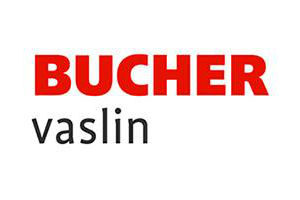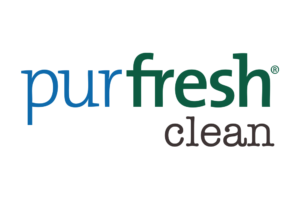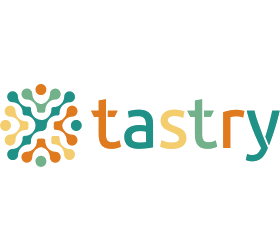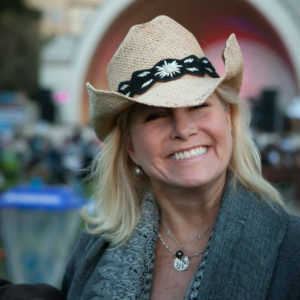Whether it’s O3 treatment, simpler yeast inoculation or substitutes for sulfur, there’s much for winemakers to learn at this year’s Expo.
By Barbara Barrielle
By combining artistry with science, winemakers continuously reinvent their processes and results, both in reaction to changing regulatory and natural environments and to reflect shifting consumer demands. The Winemaking seminar track at WIN Expo 2022 (December 1 at the Sonoma County Fairgrounds in Santa Rosa, Calif.) will highlight some of the more recent explorations and discoveries. Each discussion will include an in-session tasting.
Climate change affects wine
“Addressing Climate Change in Winemaking: Managing Alcohol and Acidity” opens the day with Bucher Vaslin North America Enology Director Eglantine Chauffour and Isabelle Mort, winemaker at Flanagan Wines, discussing how climate change has led to lower natural acidity, higher Brix and higher pH in wine. All of these elements, particularly elevated pH, present challenges for winemakers as they look to manage processes and deliver consistent wines. Additionally, these shifts result in the need to address microbial stability and oxidative challenges to avoid depreciating wine quality through fermentation and aging.
 “Climactic heat has made for wines with higher sugar, translating to higher alcohol levels and lower acidity,” says Chauffour. “Consumers, on the other hand, are looking for lower alcohol, higher acid wines. So we have trends going in opposite directions — and consumers don’t change their tastes because of climate change.
“Climactic heat has made for wines with higher sugar, translating to higher alcohol levels and lower acidity,” says Chauffour. “Consumers, on the other hand, are looking for lower alcohol, higher acid wines. So we have trends going in opposite directions — and consumers don’t change their tastes because of climate change.
“The goal in research,” she continues, “is to look at different steps and ideas…tools for the winemaker to manage the climate.”
The panel will explore solutions available to address climate-driven challenges in the winemaking process and will feature trial tastings demonstrating the real-world research results. A candid discussion with wineries that use Bucher Vaslin resources will mirror the challenges all wineries face today. Working together, interventions and solutions become possible.
Preemptive cleansing
Christian deBlasio, founder and CEO of Purfresh, moderates the session “New O3/Ozone Uses in the Winemaking Process: Treating Fruit at Arrival to Mitigate Future Challenges.”
 Ozone (O3), a highly reactive gas composed of three oxygen atoms, is both a natural and a man-made product that improves the respiratory process at the cellular level. decomposes back Today, wineries use ozone applications for cleaning equipment, but its effectiveness may transfer easily to grape treatment.
Ozone (O3), a highly reactive gas composed of three oxygen atoms, is both a natural and a man-made product that improves the respiratory process at the cellular level. decomposes back Today, wineries use ozone applications for cleaning equipment, but its effectiveness may transfer easily to grape treatment.
Purfresh explores the efficacy of ozone applications on grapes and other crops after harvest (but before processing). “If you clean grapes before they’re crushed, you clear the background noise of mold, dirt and other compounds,” says deBlasio.
Purfresh Wine containers are designed for pre-crush improvement of winemaking, wine quality and to save harvests from smoke taint caused by wildfires, he explains.
“O3 decreases the defense the grape skin has against nature and shocks the grapes before you crush them,” continues deBlasio. “To treat grapes, we have 40 foot mobile systems that can handle up to 4-5 tons each and treat grapes over 24 hours with a formula of ozone, temperature and humidity.”
Twenty wineries, including Deerfield Ranch (Kenwood), Porter Family Vineyards (Napa) and Rombauer (St. Helena) in California; Shea Wine Cellars (Newberg, Ore.); and Blue Mountain (Okanagan Falls, B.C.) employ Purfresh technology. Some started O3 treatment because of smoke taint but now use it for flavor enhancement.
 Katerina Axelsson, founder and CEO of Tastry, a company that’s developed data sets to help consumers find wines they love, says, “Tastry uses novel analytical chemistry, automated feature recognition and various forms of machine learning to decode the flavor of wine — the taste, aroma, texture and color — and to decode the palate preferences of consumers.
Katerina Axelsson, founder and CEO of Tastry, a company that’s developed data sets to help consumers find wines they love, says, “Tastry uses novel analytical chemistry, automated feature recognition and various forms of machine learning to decode the flavor of wine — the taste, aroma, texture and color — and to decode the palate preferences of consumers.
“In addition to carbon filtration, reverse osmosis and enzyme treatments, TastryAi evaluated the effects of ozone treatment on fruit prior to pressing. During many tests of ozonated fruit, TastryAi learned that not only can the proper application of ozone ameliorate some effects of smoke taint, but also that ozone can have benefits on untainted fruit as well.”
DeBlasio will moderate a panel of experts including Axelsson, Ken Bernards of Porter Family and Ancien Wines, and post-doctoral researcher Marguerite Modesti of the University of Tuscany. A tasting will compare wines with and without O3/ozone treatment.
Saving time and energy
In “Simplifying the Use of Active Dry Yeast Through Direct Inoculation or Simple Rehydration,” Anne Flesch of Fermentis, a company dedicated to the fermented beverages industry, leads a discussion about simplifying the fermentation process.
 As wineries face workforce shortages and resource constraints, winemakers must consider stepping away from tried-and-true oenological practices to address these new realities. Recognizing new needs for efficiency, panelists in this session will explore yeasts that do not require the cumbersome step of rehydration and acclimatization prior to pitching.
As wineries face workforce shortages and resource constraints, winemakers must consider stepping away from tried-and-true oenological practices to address these new realities. Recognizing new needs for efficiency, panelists in this session will explore yeasts that do not require the cumbersome step of rehydration and acclimatization prior to pitching.
Panelist Erica Stancliff, winemaker at Trombetta Family Wines (Forestville, Calif.) and several other small wineries, is currently conducting a trial comparing the methodologies of direct pitch yeast versus rehydrated yeast. “The point of the trial I’m working on is to show fermentation kinetics of the yeast used, whether direct pitch or rehydrated.”
The obvious advantage to the direct pitch method is that it takes very little effort. The disadvantage is that it prohibits some of the yeast’s ability to ferment effectively at the very beginning of fermentation. The result is a slight delay in the startup of fermentation (usually a matter of hours).
“Being able to use direct pitch yeast is a huge time saver in the winery,” says Stancliff. “As a person with multiple clients and who’s dealing with small vineyard lots, rehydrating yeast and doing buildups can take hours — even a whole day — when timing is incredibly important. Being able to weigh out and directly add yeast to a tank or barrel fermentation gives me back a ton of time during harvest.”
“So far, all of the fermentation kinetics match between the dry and rehydrated (yeasts) and I’m happy with the current progress of the trial,” she says. There will be a comparative tasting of other wines that have undergone analogous testing.
 Joining Stancliff on the panel is Han Han, winemaker at Bear Creek Winery (Lodi, Calif.); James Wall, winemaker at O’Neill Wines (Paso Robles, Calif.); and James Roblee of the ATP Group, a leading supplier to the wine, beer and food industries. Attendees will gain in-depth knowledge about this inoculation solution and the benefits it could offer any cellar.
Joining Stancliff on the panel is Han Han, winemaker at Bear Creek Winery (Lodi, Calif.); James Wall, winemaker at O’Neill Wines (Paso Robles, Calif.); and James Roblee of the ATP Group, a leading supplier to the wine, beer and food industries. Attendees will gain in-depth knowledge about this inoculation solution and the benefits it could offer any cellar.
Don’t miss out
Winemaking is an age-old process that must contend with modern day issues such as changing temperatures, natural disasters and consumer pressures. These sessions are designed to give wineries and winemakers tools to continue to make wines of excellence while enhancing efficiency and profitability. Tasting differences in winemaking treatments will further enhance attendees’ understanding of their options.
We’ll see you at the Expo.
Use promo code WINexpo2022 for a Free Trade Show Pass, Free Parking, & $35 discount on conference sessions.
Register at wineindustryexpo.com.
______________________________________________________________________
 Barbara Barrielle
Barbara Barrielle
Barbara Barrielle was a longtime publicist in sports and wine before going to the other side as a wine, travel and entertainment writer. She also produces films and has a documentary “Crushed: Climate Change and the Wine Country Fires” releasing in 2021. Current publications Barbara writes for are AARP Magazine, Northwest Travel & Life, East Hampton Star, Napa Valley Register, Oregon Wine Press as well as Wine Industry Advisor. She lives in Healdsburg, travels extensively and studies wine and languages.
















